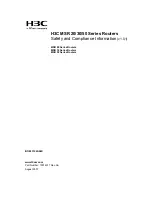
8-11
Catalyst 6000 Family Software Configuration Guide—Releases 6.3 and 6.4
78-13315-02
Chapter 8 Configuring Spanning Tree
Understanding PVST+ and MISTP Modes
Disabled State
A port in the disabled state does not participate in frame forwarding or STP, as shown in
Figure 8-7
. A
port in the disabled state is virtually nonoperational.
Figure 8-7
Port 2 in Disabled State
A disabled port performs as follows:
•
Discards frames received from the attached segment.
•
Discards frames switched from another port for forwarding.
•
Does not incorporate station location into its address database. (There is no learning, so there is no
address database update.)
•
Receives BPDUs but does not direct them to the system module.
•
Does not receive BPDUs for transmission from the system module.
•
Receives and responds to network management messages.
Understanding PVST+ and MISTP Modes
Catalyst 6000 family switches provide two proprietary spanning tree modes based on the IEEE 802.1D
standard and one mode that is a combination of the two modes:
•
Per VLAN Spanning Tree (PVST+)
•
Multi-Instance Spanning Tree Protocol (MISTP)
•
MISTP-PVST+ (combination mode)
Filtering
database
Frame
forwarding
System
module
Port 1
BPDUs
All segment
frames
All segment
frames
Forwarding
Disabled
Station
addresses
Network
management
and data frames
Port 2
S5696
Network
management
frames
Data
frames
















































